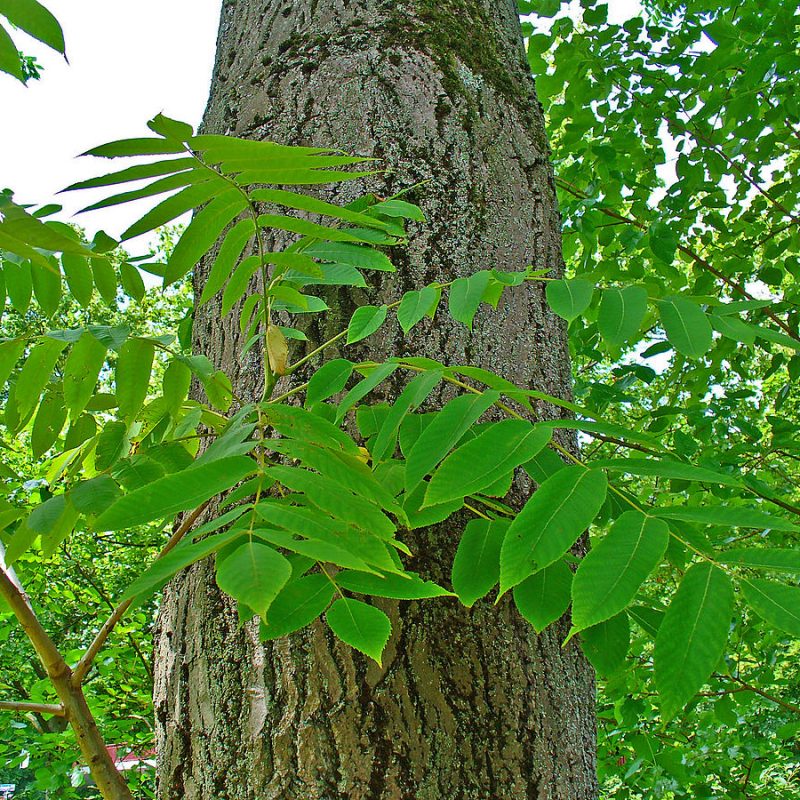
Butternut
Scientific name
Juglans cinerea
Description
Butternut is a fast growing, short lived, deciduous tree species that typically grows about 18 m in height. This plant may also be known by the common name: White Walnut. The bark is gray coloured and has narrow flat ridges. The leaves are alternately arranged, pinnately compound, dark green coloured, and have 11-17 lanceolate shaped leaflets. The flowers are yellowish green catkins (male), or clusters of red, two lobed styles (female), and bloom between May and June. The seeds are edible, oval nuts that are encased in light green, sticky, hairy husks and mature in the fall. Butternut trees are currently an endangered species because of their susceptibility to Butternut Canker, a fungal disease that can kill infested trees over several years.
Planting conditions
Butternut grows best in moist to normal conditions with full sun exposure. It prefers fertile, well-drained loam or rocky soil types. It is moderately tolerant of drought but young plants should be watered during hot summers. It is intolerant of shade. This tree can be naturally found in open forests, forest edges, and along stream or lake shorelines.
Details
-
Plant height:
- Any
- Over 3m
-
Moisture level:
- Dry
- Normal
- Moist
- Drought Tolerant
-
Light conditions:
- Full sun
-
Soil type:
- Sandy
- Loamy
- Rocky
-
pH:
- Normal
-
Depth:
- Potted
- Bareroot
-
Eco Zone:
- 5a
- 5b
- 6a
- 6b
-
Plant type:
- Tree
-
Height:
- 18m
-
Spread:
- 2m

